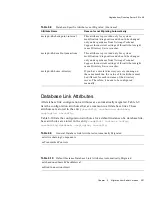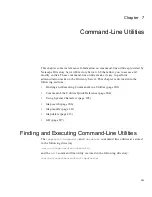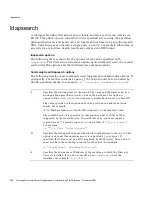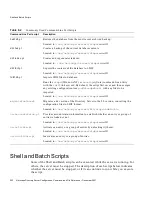
ldapdelete
Chapter
7
Command-Line Utilities
215
ldapdelete
Allows you to perform delete operations on directory entries via LDAP.
Syntax
ldapdelete [
optional-options]
ldapdelete options
The following three sections list the options that can be specified with
ldapsdelete
. The first section lists those options most commonly used, the second
section lists SSL options and the third lists less common options.
Commonly Used ldapdelete options
To delete an entry or entries from an existing database, use the
ldapdelete
command-line utility with the following options:
-y
Specifies the proxy DN to use for the modify operation. This argument is
provided for testing purposes. For more information about proxied
authorization, see Chapter 6, “Managing Access Control” in the Netscape
Directory Server Administrator’s Guide.
-D
Specifies the distinguished name with which to authenticate to the server. The
value must be a DN recognized by the Directory Server, and it must also have
the authority to delete the entries. For example,
-D "uid=bjensen,
dc=example,dc=com"
. For more information on access control see Chapter
6, “Managing Access Control” in the Netscape Directory Server Administrator’s
Guide. If you use the -D option, you cannot use the -N option.
-h
Specifies the name of the host on which the server is running. For example,
-h
cyclops
. The default is
localhost
.
-p
Specifies the port number that the server uses. Default is 389. If
-Z
is used, the
default is 636.
-w
Specifies the password associated with the distinguished name specified in the
-D
option. For example,
-w mypassword
. The default is "", or anonymous.If
you do not specify a password on the command line, and the server requires
one, the command will prompt you to provide one. It is more secure not to
provide a password on the command line so that it does not show up in clear
text in a listing of commands.
dn
Specifies the dn of the entry to delete.
















































